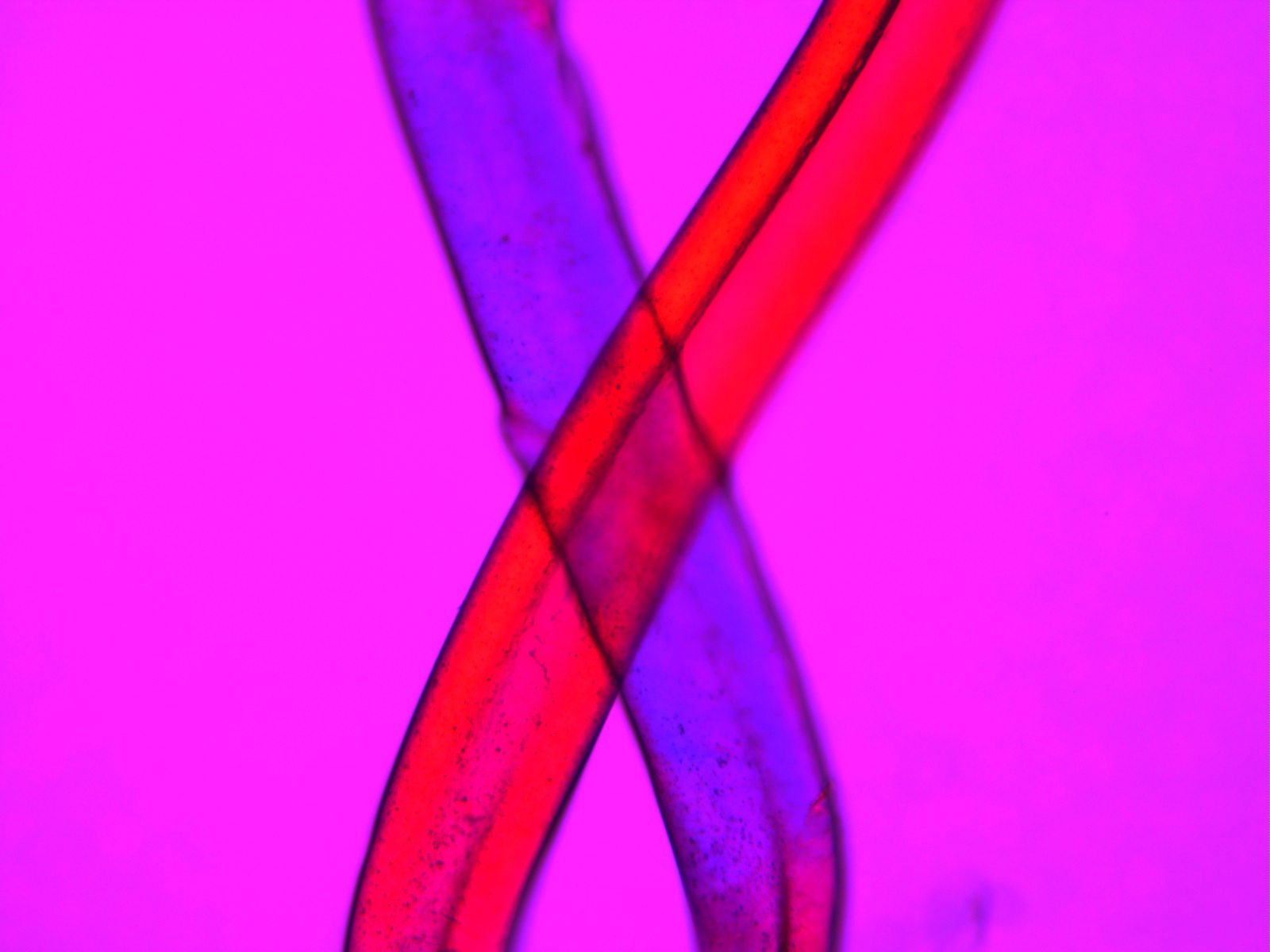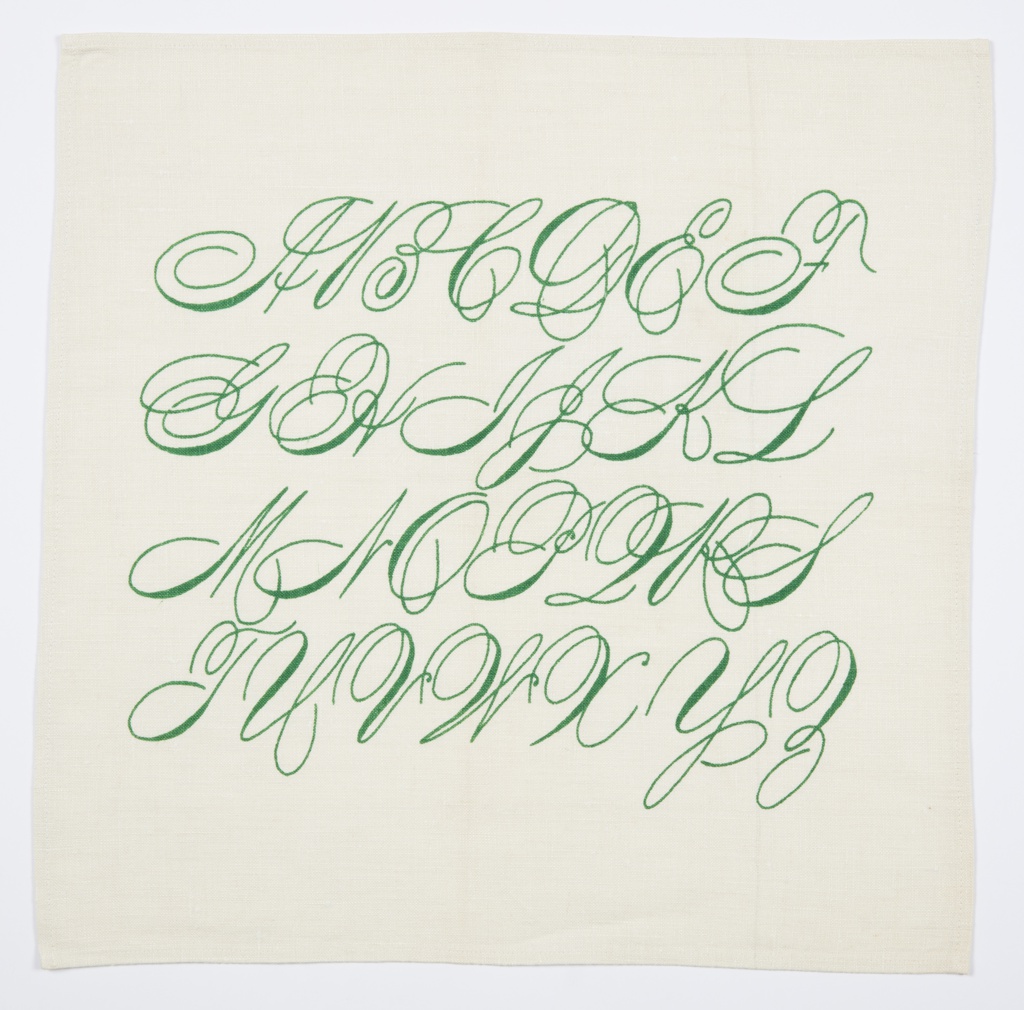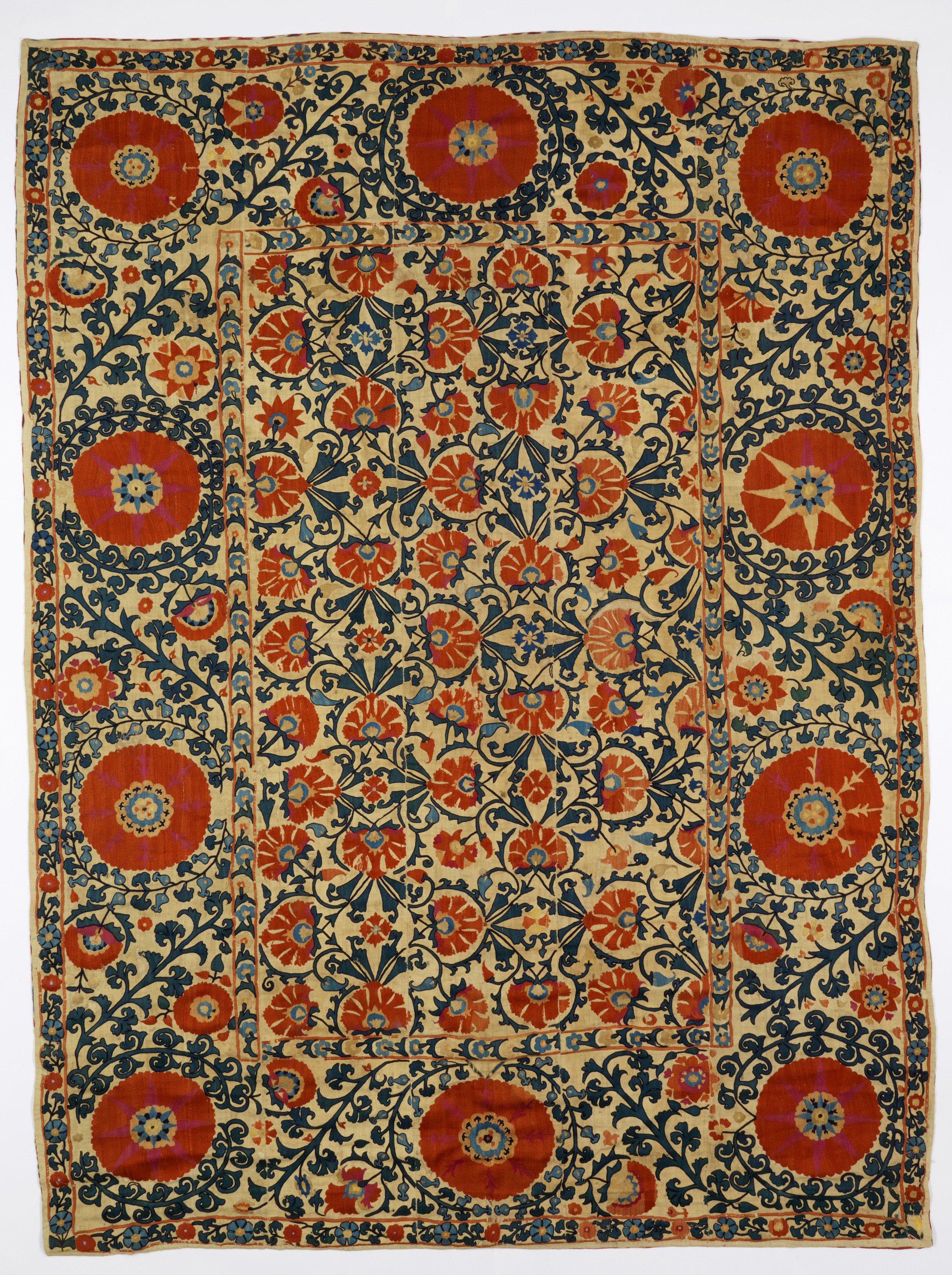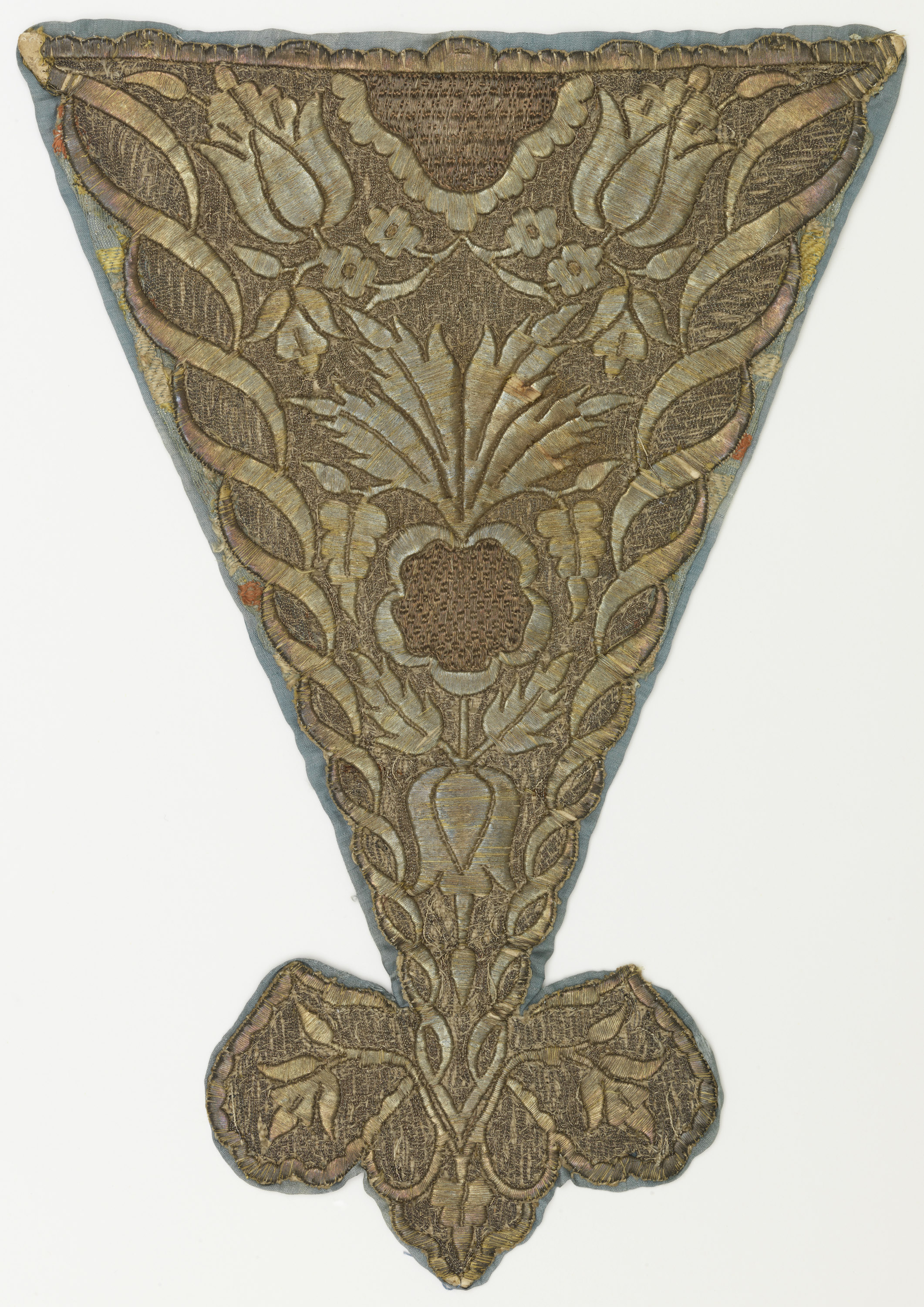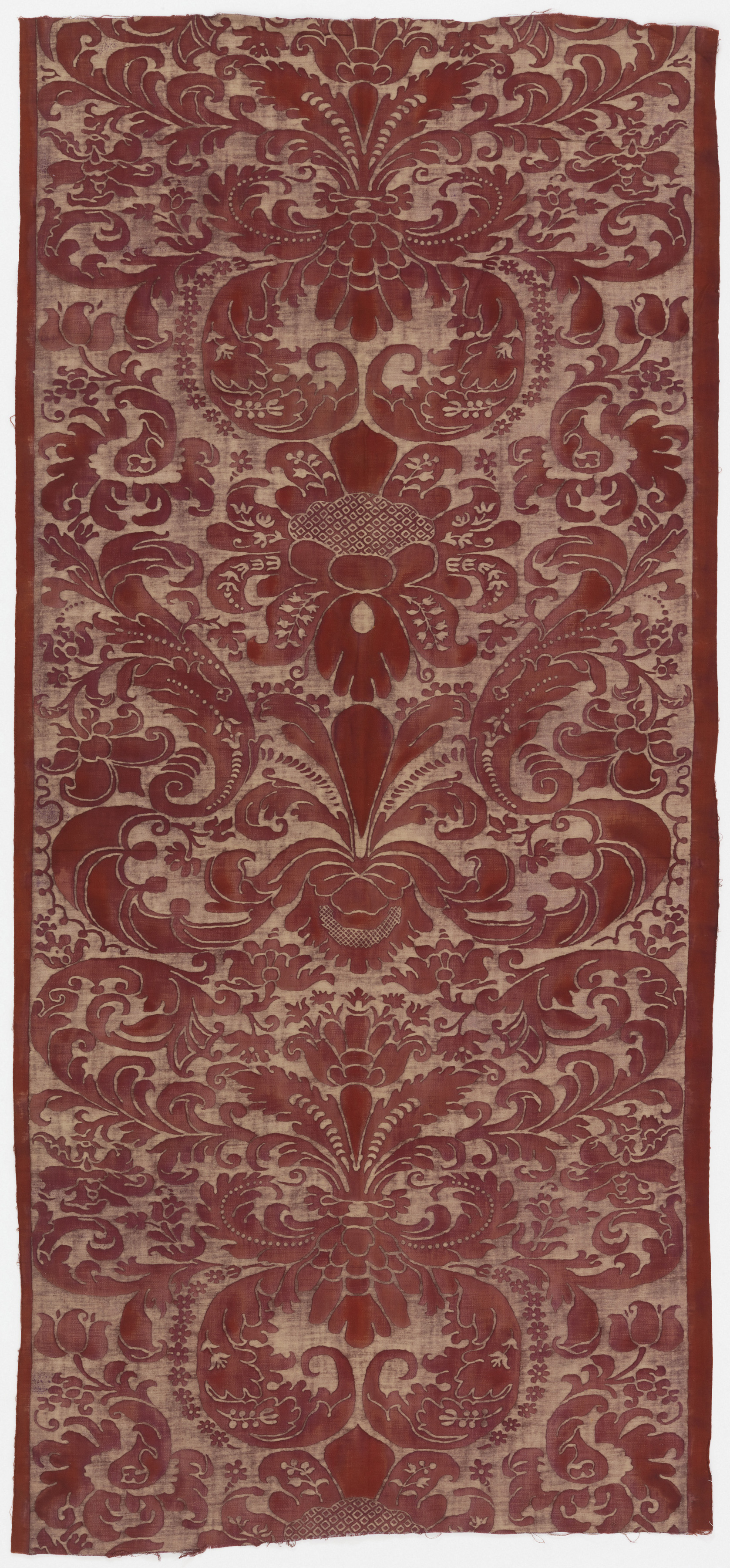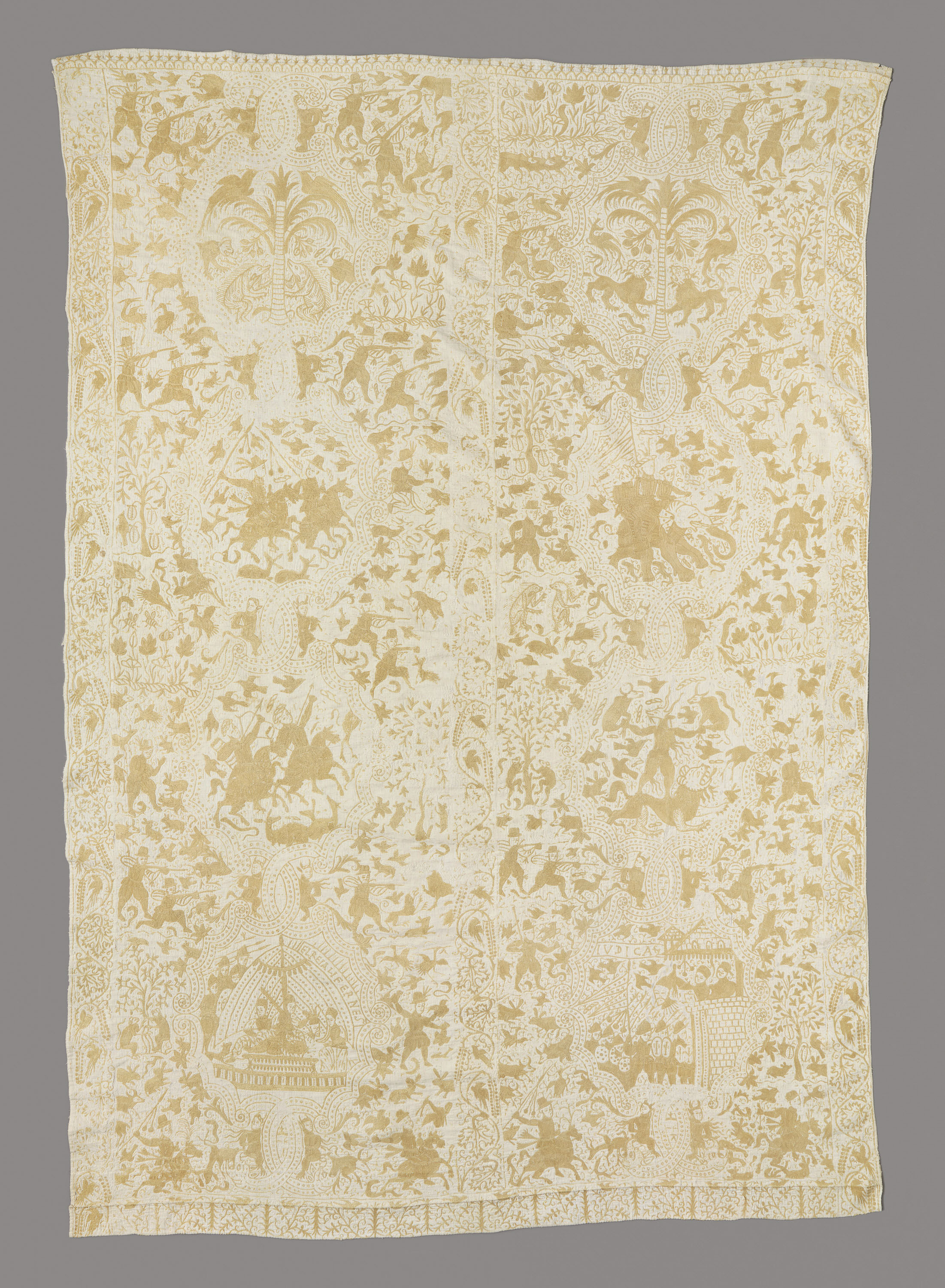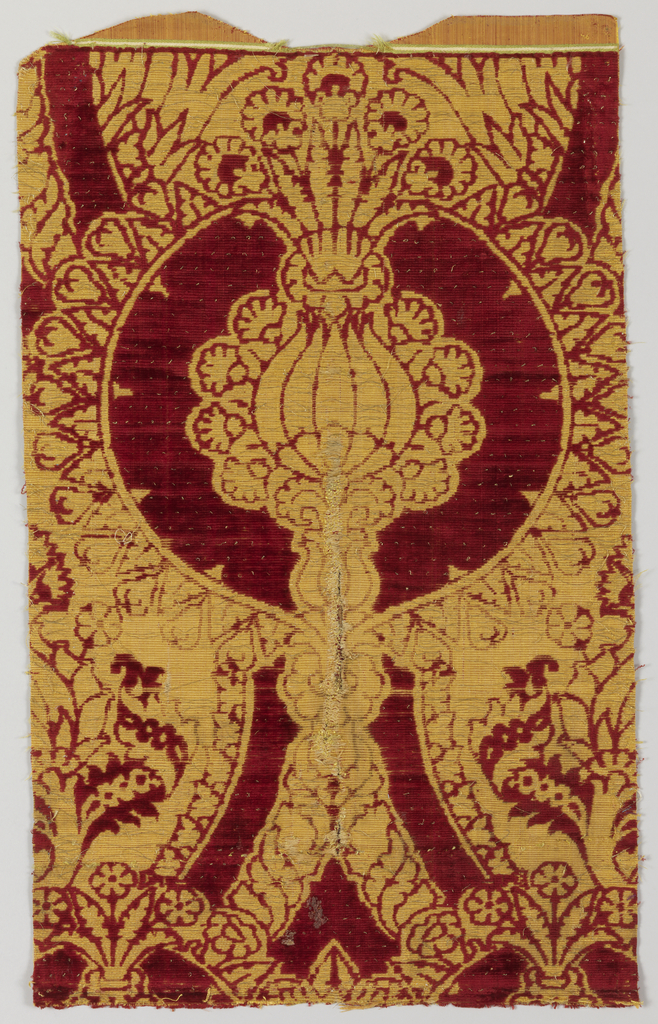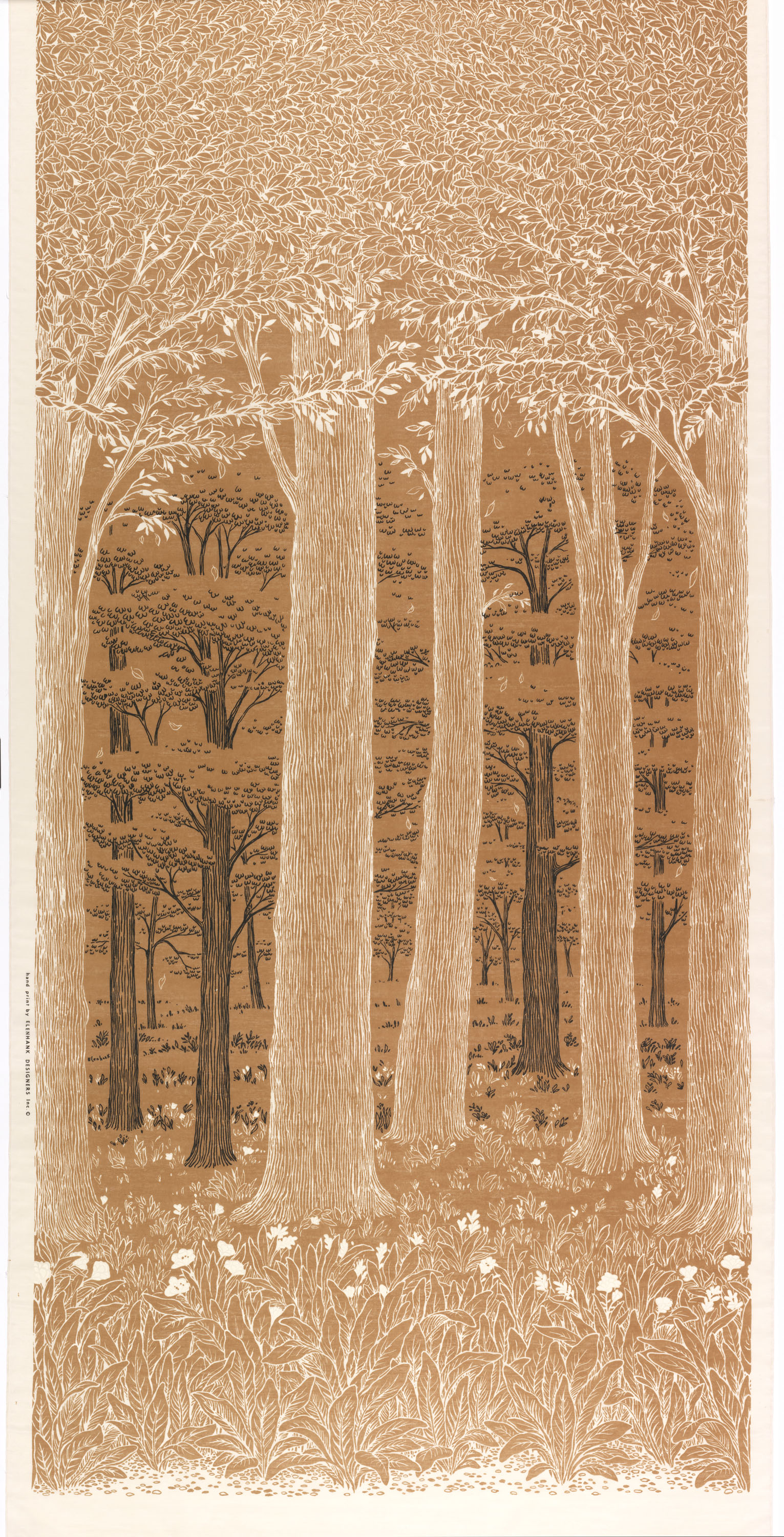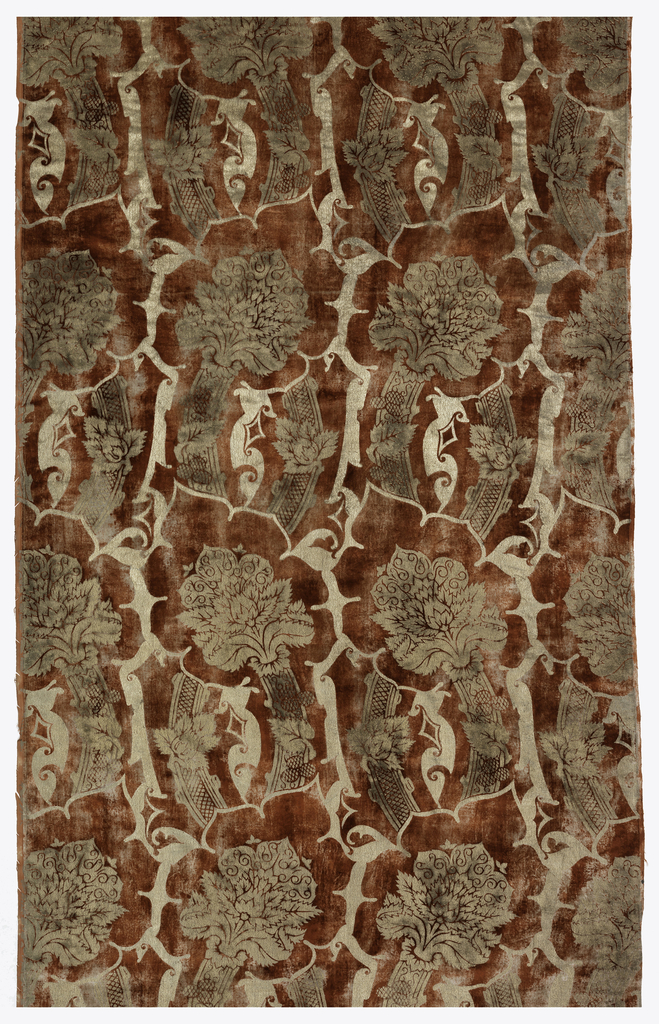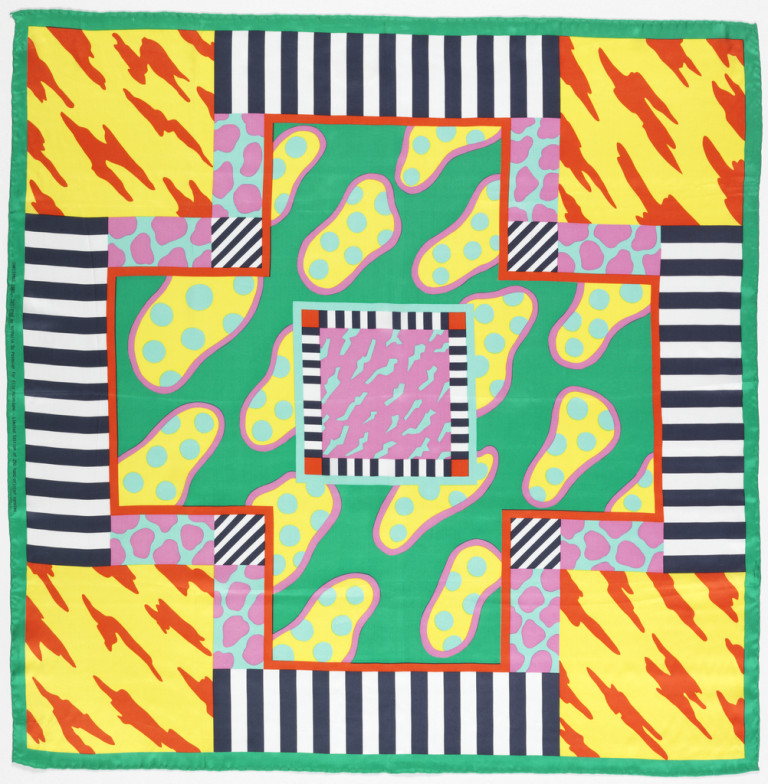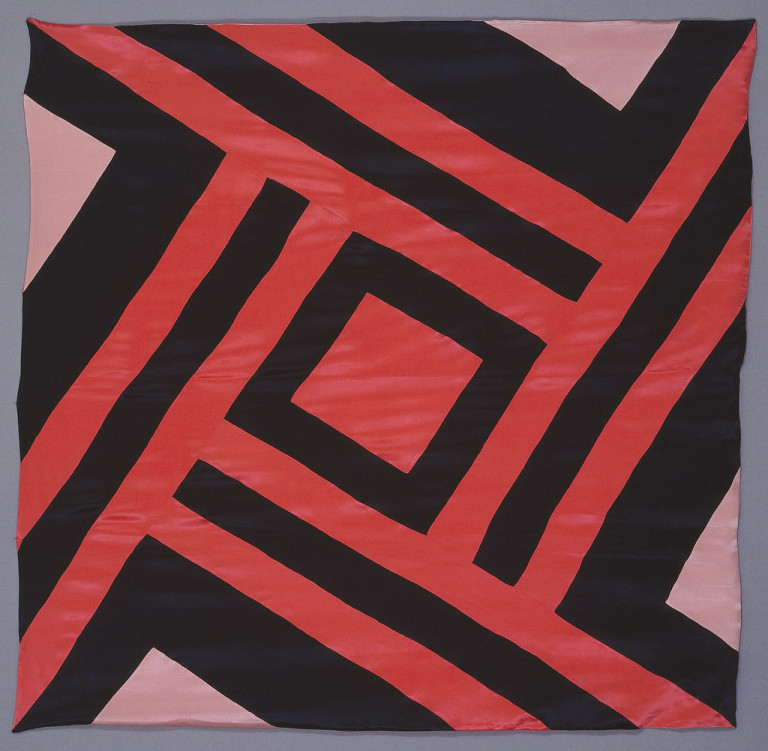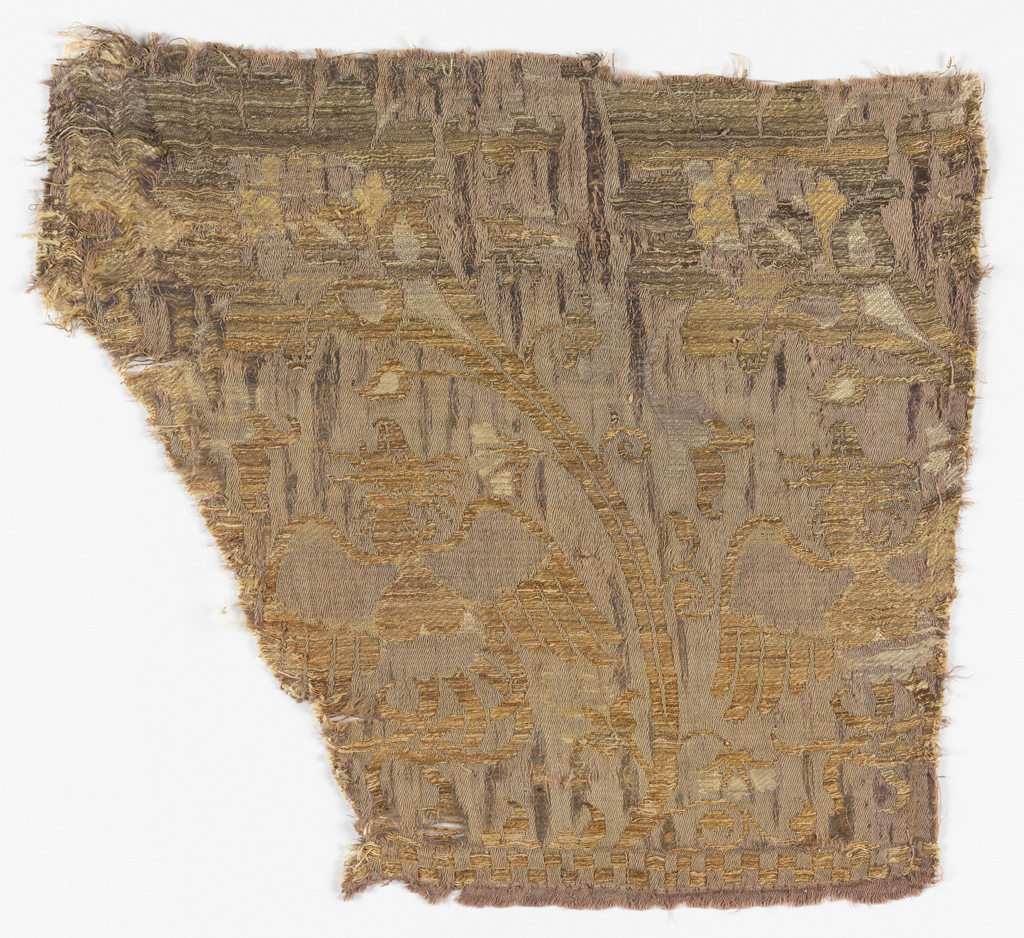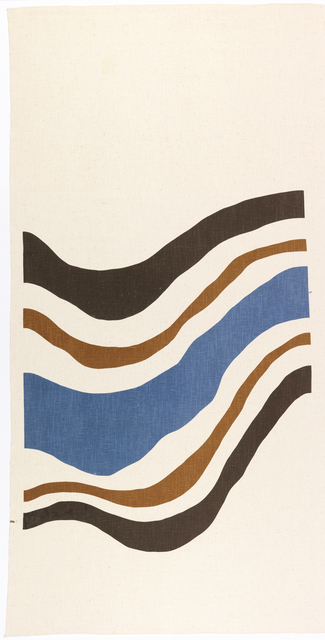In preparation for the exhibition "A Dark, A Light, A Bright: The Designs of Dorothy Liebes," textile conservators analyzed textile samples to better understand and care for the objects.
How textiles are stored greatly impacts their future condition. Creases created by folding textiles become deeply engrained; stress along these folds can create breaks in the fibers, eventually leading to tears; discoloration from light exposure, internal chemical degradation, and exposure to acidic environmental factors like wood furniture, non-archival paper, etc. intensifies along the exposed surfaces...
Suzani, meaning “of needle” in Persian, are large-scale embroideries central to Central Asian domestic culture. Young girls learned to sew at an early age, often beginning to work on textiles intended for their own marriage dowries. Suzanis were considered the most important textiles in a dowry. Indicators of skill and family wealth, they were status...
The stomacher was a necessary element of a woman’s daily wardrobe in the eighteenth century. Often elaborately decorated with embroidery, ribbon bows, and metal threads, the triangular shaped accessory covered the open front of the robe à la française. As the fundamental style of dress during this period, these gowns were characterized by their front...
Named after the 17th century Italian painter, “Caravaggio” was designed in the spirit of the Italian Baroque with a pattern of pomegranates and heavy vegetal scrollwork foliate. Fortuny achieved the appearance of woven silk damask by printing on a satin weave fabric of long staple Egyptian cotton, which had a natural sheen, and creating depth...
Embroidered in Bengal, India for the Portuguese market, this colcha, or bedcover, is a result of the interchange of goods and cultural influence between two trade markets. The style and materials are typical of India, but the universal theme of good triumphing over evil is illustrated through a mix of local and European imagery. Eight...
This velvet exemplifies the prodigious skill of Italian velvet weavers in the latter half of the 15th century. The red silk pile is embellished with sparkling allucciolato, or metallic weft loops. The voided areas have no pile, but shine with supplementary wefts of silk wrapped in silver-colored metal. Italian velvet weavers developed a special technique...
Henry and Eleanor Kluck, the design duo known as Elenhank, drew inspiration for Forest from the northern Indiana landscape surrounding their home. When the fabric panels were hung as curtains or wall coverings, the pattern would repeat across large expanses to envelope a space as if it was a woodland glade. This is a continuation...
Mariano Fortuny and his family collected textiles and costumes from around the world, compiling a rich resource that served as inspiration for his own designs. “A fabric design,” he once noted, “concretely captures a moment through the skill of the artist, who responds unconsciously to the place and time in which he lives.” This pattern...
If Natalie du Pasquier’s recent collaboration with mass market retailers and fashion designers, are any indication, the Memphis look is back in style. For the American Apparel collaboration, Du Pasquier used a similar approach to develop her current designs, sketching with colored pencils and then using a cut and paste method to create her distinctive...
With its bold black lines contrasting with the tonal pinks, this scarf would have been a colorful finishing touch to a day ensemble when tied and draped across ones shoulders. The pattern is made not by a printing technique, but by silk satin pieced and hand sewn in the same manner as other pieces of...
While the primary goal of a conservator continues to be the documentation and preservation or retardation of deterioration, conservation practices and materials have evolved over the years. For example, cellulose acetate was used to store museum collections in the 1940s and 1950s. At the time, it was a great solution and protected fragile objects in...
Anyone who has scuffed their brand new sneakers can attest to the difficulty of keeping shoes in good condition. One of the best ways that Cooper Hewitt’s conservation department can ensure the preservation of the collection is through proper storage. Take for instance the recently acquired pair of Nike FlyKnit Racer shoes. While the sneakers are new,...
Rhythm (1972) is like a visual representation of the movement of sound—the pulsation of music or a heartbeat on an electrocardiogram. In fact, it is the designers’ graphic interpretation of a meandering stream, inspired by the Indiana woodland. This feeling of movement is a product of the design concept promoted by Elenhank Designers, Inc. called the “mural...
